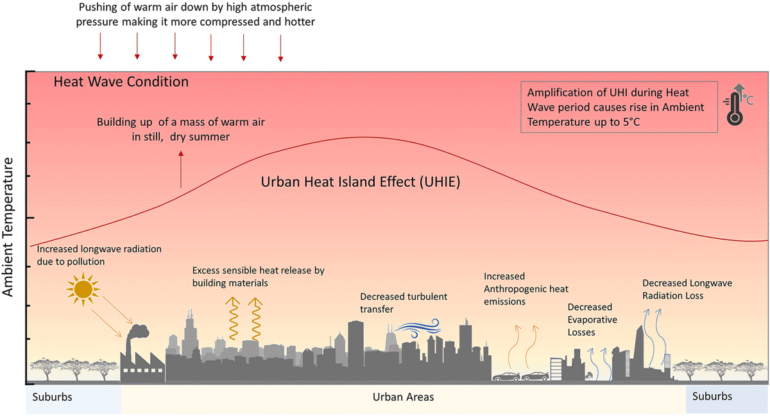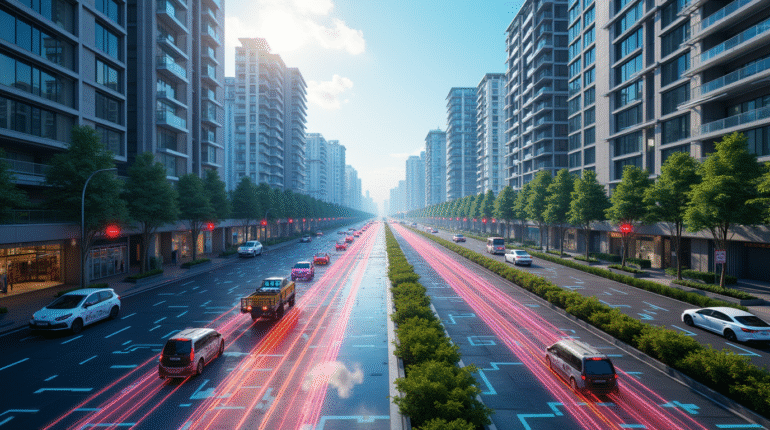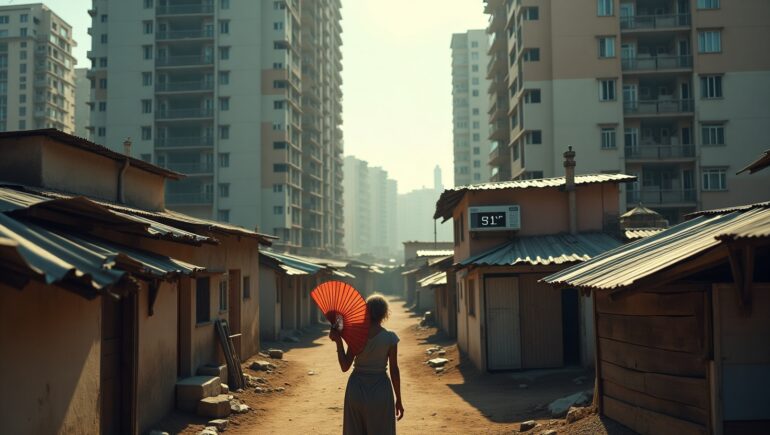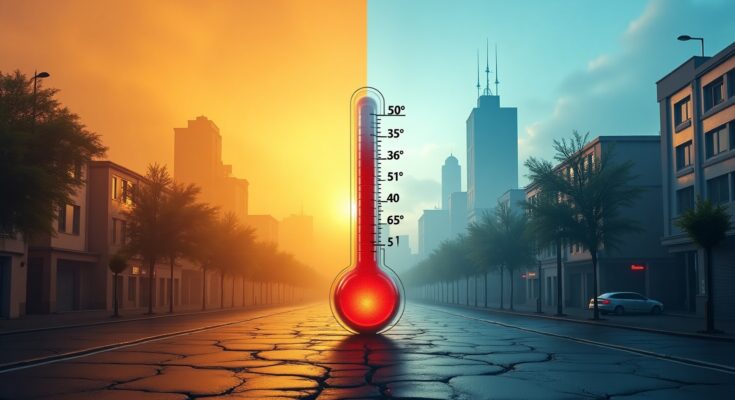Extreme Heat Is Taking Over the World
High temperatures have broken all records in the summer of 2024 to date, with heatwaves raging from Phoenix to Paris, Delhi to Tokyo. Mercuries soaring above 50°C (122°F) are made to force cities and their systems to come face-to-face with the deadly impacts of extreme heat: fatalities due to heatstroke, wildfires, and disastrously damaged infrastructure. In a fast-changing climate, cities are hastening in their efforts to install cooling strategies as well as emergency response plans and long-term resilience measures against climate impacts.
It looks at how places of human settlement, or cities, are changing to deal with very hot weather; discovering new cooling machines, altering rules, and together with people, solving problems which can act like examples for a future that is hotter.
The Science Behind 2024’s Record-Breaking Heatwaves
For climate scientists, the extreme warmth this year is a mixture of El Niño conditions, plus greenhouse gas emissions and the urban heat island effect—the concrete and asphalt surfaces absorb and radiate heat, making cities much warmer than their surroundings. 2024 is on track to be the hottest year for record-keeping agencies, surpassing benchmarks set in 2023.

Key findings from recent studies:
- Nighttime temperatures are rising faster than daytime highs, reducing recovery periods for vulnerable populations.
- Humidity paired with heat (wet-bulb temperatures) is reaching lethal thresholds in South Asia and the Middle East.
- Power grids are failing under surging demand for air conditioning, exacerbating public health risks.
How Cities Are Fighting Extreme Heat: Immediate Measures
1. Cooling Centers and Emergency Response Plans
Cooling Centers and Emergency Response Plans. In addition, many cities have implemented around-the-clock cooling centers in libraries, community centers, and transit hubs for the homeless and low-income population. Los Angeles, Athens, and Cairo have established mobile heat clinics to treat victims of heatstroke.
2. “White Roof” and Urban Greening Initiatives
Another more ambitious program is the “white roof” initiative, which is slowly spreading across major cities in the US but has more coverage in California (Los Angeles included) due to Proposition 39 legislation enabling it through energy efficiency channels. This program offers funds to change roof colors to white or other reflective colors that would reduce temperature absorption by buildings and thus reduce air conditioning costs. Other than this, urban areas are witnessing a steady increase in green cover, which helps cool concrete buildings as well as trap street dirt.

3. Adjusted Work and School Schedules
To help beat the urban heat island effect, cities like New York and Tokyo are requiring cool roofs—reflective coatings that reduce building temperatures by up to 5°C (9°F). At the same time, Singapore and Milan are spending money on vertical gardens, tree canopies, and permeable pavements to improve shade and evaporative cooling.
Long-Term Climate Adaptation Strategies

1. Smart City Technologies
- Seoul and Barcelona use AI heat maps to show high-risk neighborhoods where cooling should go first.
- Phoenix tries coatings for “cool pavement” that soaks up less sun heat than normal asphalt.
2. Water-Based Cooling Systems
- Paris has put in place mist showers and fog tunnels in public areas.
- Riyadh brings back old designs of wind towers and qanats (underground water channels) for passive cooling.
3. Heat-Resilient Architecture
- New buildings in Dubai have shaded walkways, plus thermal insulation and zero-energy cooling systems.
- Rotterdam’s floating neighborhoods show how living on the water might help reduce heat risks.
Case Studies: Cities Leading the Fight Against Heat
1. Athens, Greece – The World’s First Chief Heat Officer
Appointed after the deadly 2021 heatwave, Athens’ Chief Heat Officer Eleni Myrivili has spearheaded initiatives like renaturalizing riverbeds, expanding green corridors, and creating a real-time heat risk app.
2. Melbourne, Australia – The “Urban Forest” Strategy
By doubling tree cover since 2012, Melbourne has reduced peak temperatures by 4°C (7°F) in some districts. The city plans to plant 3,000 trees annually until 2030.
3. Ahmedabad, India – A Model for the Global South
After a 2010 heatwave killed 1,300+ people, Ahmedabad launched a Heat Action Plan featuring early warning systems, public awareness campaigns, and water distribution points—a template now adopted by 50+ Indian cities.
Challenges and Inequities in Heat Adaptation

Despite progress, significant hurdles remain:
- Low-income neighborhoods often lack green spaces and cooling infrastructure.
- Aging populations and outdoor workers face disproportionate risks.
- Short-term solutions (like AC reliance) worsen energy demands and emissions.
The Future: Can Cities Outsmart Rising Temperatures?
Experts agree that reactive measures alone are insufficient. The most effective strategies combine:
- Policy reforms (e.g., heat-resistant building codes).
- Community engagement (e.g., neighborhood cooling cooperatives).
- Global climate mitigation to slow temperature rise.



